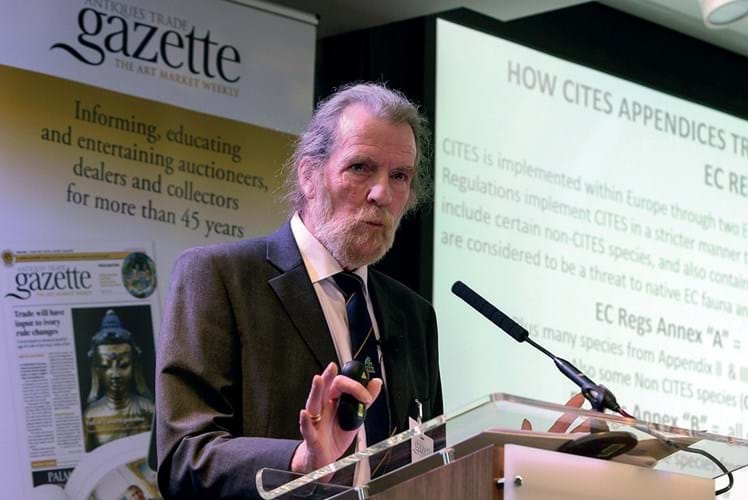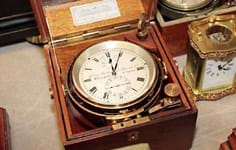Good reputations are often hard fought but through ignorance can be lost in a short space of time. It is therefore imperative that traders keep a close watch on the listings from CITES (the Convention on International Trade in Endangered Species) and the regular changes to UK government policies that can slip in seemingly unnoticed.
Unfortunately, many of these changes are not broadcast widely and the government’s dissemination of information could be better.
A good example of this is the new COTES (The Control of Trade in Endangered Species) regulations that became law in October. The law now requires sellers of an Annex A listed natural history product to include the Article 10 licence number in any advertisement – and that includes your auction catalogue, hard copy or online.
It’s not just about ivory and tortoiseshell. Whatever your speciality, whether dealing with a tigerskin rug or a Gibson guitar, it pays to always double-check.
Regular changes
Changes to the listings can occur every two to three years after agreements made at the CITES Conference of the Parties – the next being in May 2019. Species can suddenly appear on the CITES appendices – an example being the sawfish (pristidae) that appeared on the most endangered list (Appendix 1) in 2007. By the following April it had been placed in Annex A of the European Regulations thereby requiring an Article 10 licence prior to advertising/display or sale.
Twelve years later and we still see sawfish rostrums appearing in catalogues without such a licence.
Rosewood obligations
By far the biggest offender to slip through the net is Brazilian rosewood (dalbergia nigra). This particular species was first listed CITES (straight on to Appendix 1) in 1992 and appeared on Annex A from 1997, meaning that pieces of Brazilian rosewood furniture made after 1947 require an Article 10 licence from the Animal and Plant Health Agency (APHA) before they can be sold.
Not all dealers and auctioneers are aware of their obligations. It was only a few years ago, while doing a routine inspection of some taxidermy items at an auction room, that I spotted a piece of Scandinavian designer furniture. On asking whether the item with rosewood had a sales licence, a mild state of panic ensued, culminating in the immediate withdrawal of 70-odd similar lots. The story appeared in the ATG and the flood gates opened.
A couple of years later a dealer received a letter from APHA Compliance querying a sale made earlier that year of a guitar which – although not advertised as such at the time – included a rosewood fretboard. They were asking for proof of its legal import to the UK and the previous Article 10 licence number. Although that situation was resolved, as a wake-up call it was successful.
Subsequent research with the major guitar manufacturers has taught us that from the 1950s until the early ‘70s Brazilian rosewood was the timber of choice. Later, due largely to the expense, a switch to other less problematic rosewood species was common. However, sellers should assume that ‘rosewood’ could be Brazilian rosewood unless it is possible to prove otherwise – and proving it is extremely demanding.
When applying for an Article 10 licence for Brazilian rosewood, successful applicants may need to prove the item was either legally imported or it was in the EU prior to 1992. That is often difficult: instruments coming up for sale from deceased estates frequently lack provenance. To add to the complications, recently (2017) all other species of rosewood were added to the CITES Appendix II list, meaning they too require documentation whenever they are traded outside the EU.
So play your vintage Fender, Gibson or Martin etc and enjoy – but without provenance you may not be able to sell it legally.
The ‘antiques derogation’
It is important that all dealers and auctioneers are familiar with the ‘worked’ or ‘antiques derogation’ in particular. The law says that antiques are exempt from licensing providing they were ‘worked’ prior to March 3, 1947. The guidance on this issue has been periodically revised and European or simply UK policy can change in a flash.
Since December 2012, narwhal tusks need to carry Article 10 certificates, so too raw sawfish rostrums, whale teeth (without scrimshaw) and marine turtle shells (unless the mounted animal is still attached to the shell).
Previous guidance has since been replaced by the 2017 criteria. After much discussion on the subject, a clarification on tiger (and other) skin rugs now considers these to be ‘worked’ providing it has been tanned. The presence of linings, backing cloths or flat heads are no longer part of the criteria.
I will not go too deep into the elephant ivory situation that is shortly to change radically – and has been well covered elsewhere in the ATG – but currently it is important to remember that any item including any part of a raw ivory tusk is considered unworked, and so too is a tusk that is ‘less than 90% carved over the whole surface’. The great majority of ivory page turners are now classed as unworked.
You can contact Kim McDonald at Kim@taxidermylaw.co.uk













